The production area is subject to significantly higher requirements for stability and safety, so that even in real use, one will hardly or never rely on overclocked models. This is precisely why we have deliberately dispensed with the overclocked models in all the following benchmarks. This would have fundamentally changed the core message and the results anyway.
At AutoCAD, the IPC counts above all, so the order of the CPUs does not surprise us. After all, the smaller Ryzen 5 2600X still manages to leave the former top model Ryzen 7 1800X more or less clearly behind.
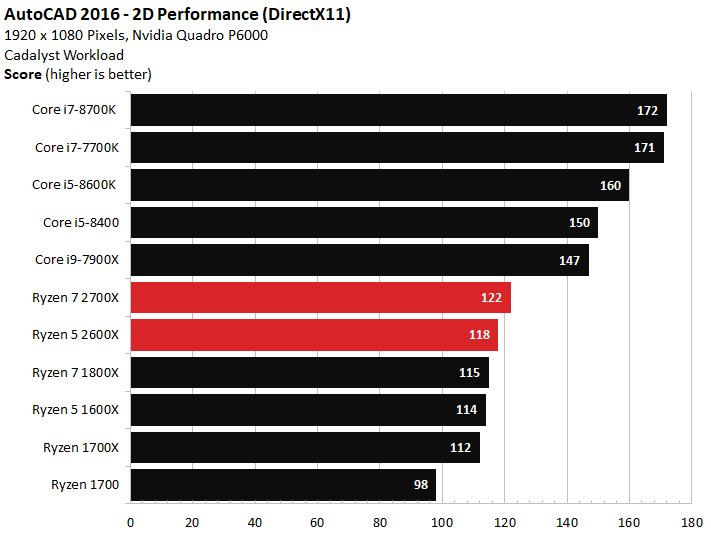
In the 3D rating, this lead is even higher, as at least up to four threads can be used here. Since both new Ryzen can clock significantly higher and XFR2 creates significantly more room for manoeuvre upwards, the two new models are also very close together.
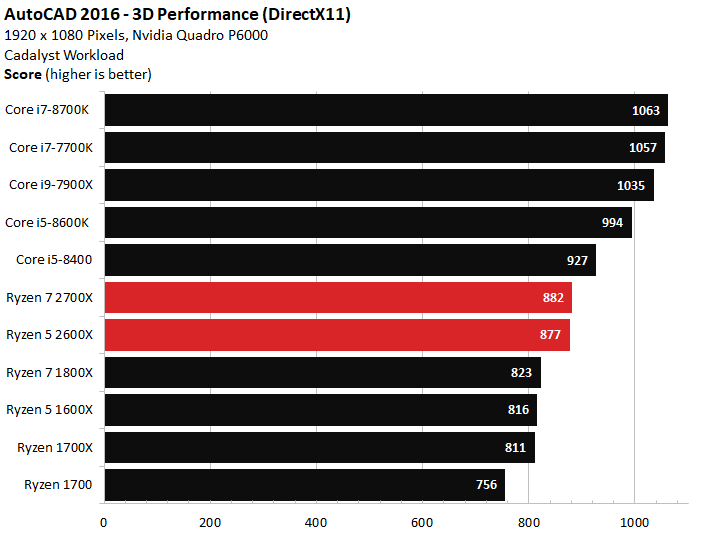
The lead in The OpenGL run of Cinebench is not quite as large, which scales significantly better over the core number. But it is still visible.
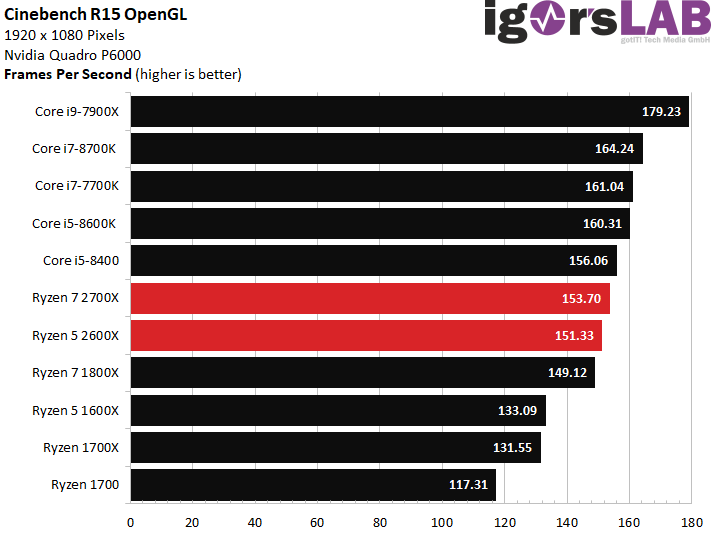
The performance in Solidworks is good, even if the IPC plays a bigger role here again.
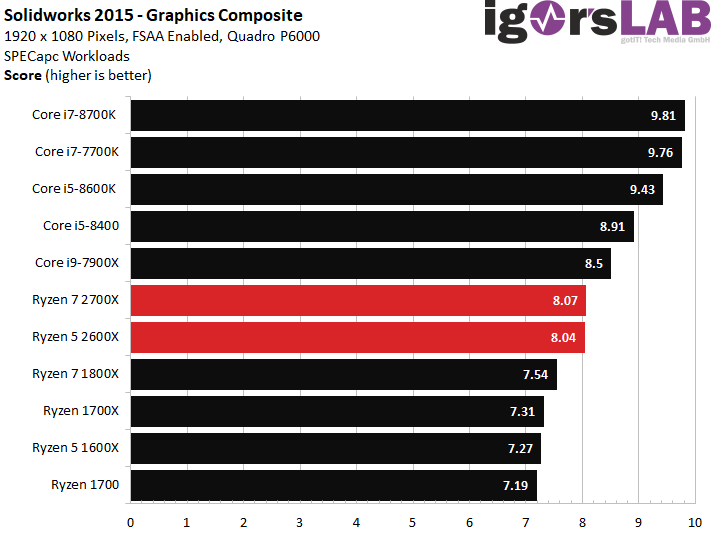
In Creo, too, the picture is almost identical. The two new Ryzen can visibly score thanks to the slightly increased IPC and the higher clock rates for the cores and memory.
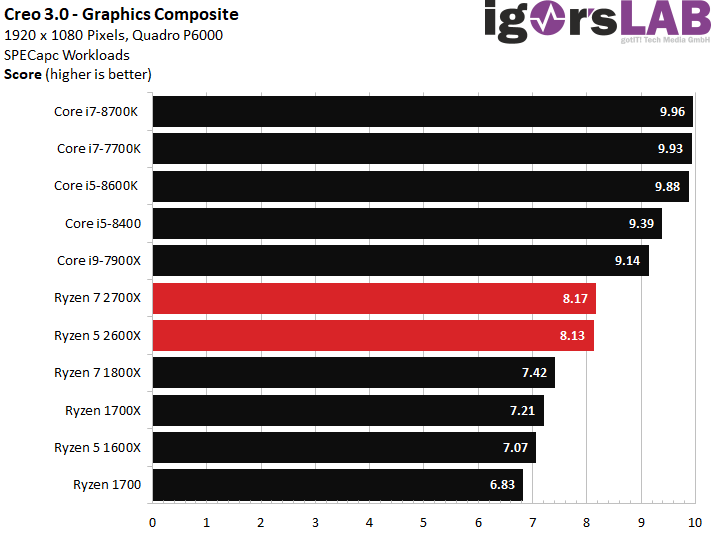
The 3ds Max is a little tighter, with the smaller Ryzen 5 2600X beating the former top model Ryzen 7 1800X, albeit only very narrowly. The Ryzen 7 2700X, on the other hand, is very much ahead.
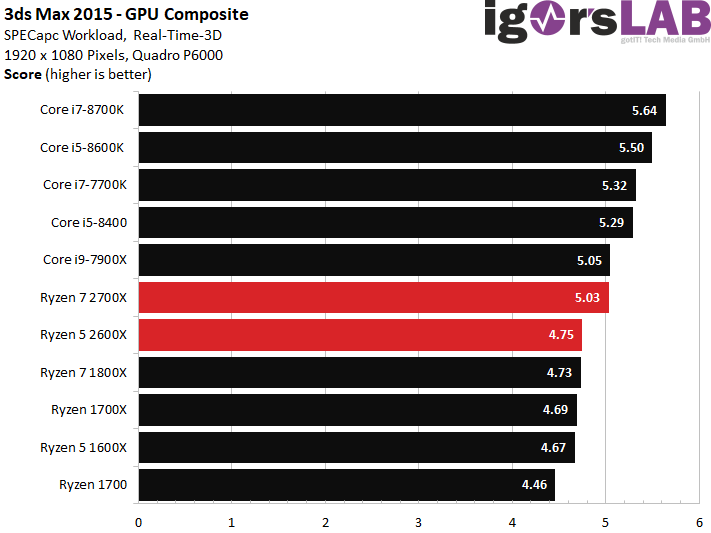
Catia provides a slightly different image, as the larger number of threads helps to stand up against higher-clocked models.
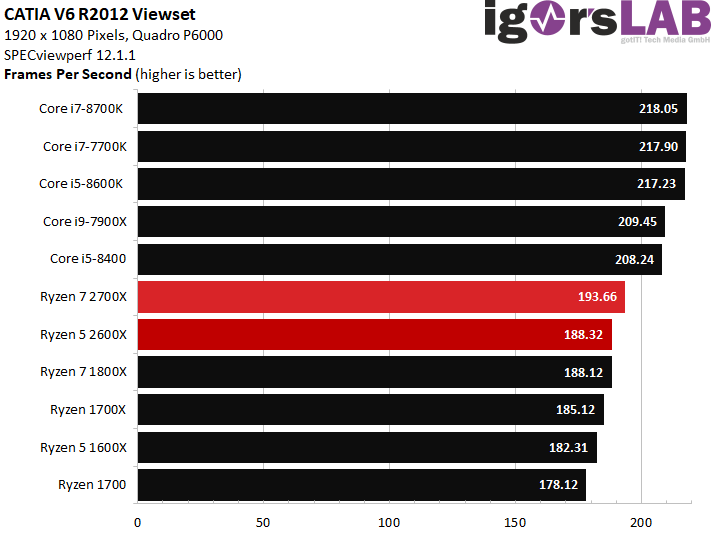
This can be seen even more clearly in Maya.
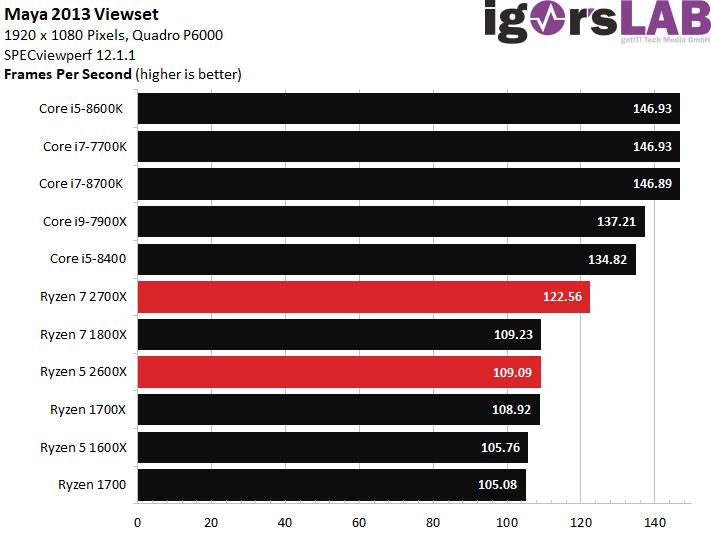
Even in the Blender loop with the 3D real-time preview, the older Ryzen 7 1800X saves itself from the Ryzen 5 2600X thanks to the physically available two additional cores, but sees no country against the Ryzen 7 2700X.
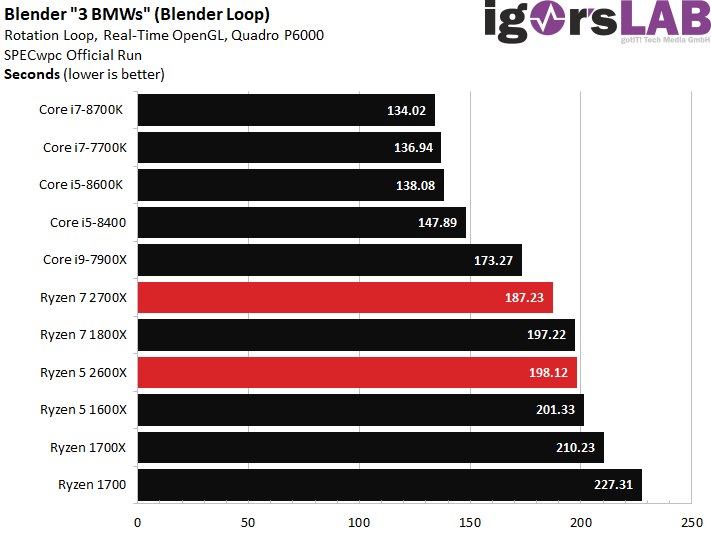
Intermediate conclusion
AMD has been able to make good ground. Real-time 3D and 2D output is an important field, but it is still dominated by the current Intel CPUs, but not so clearly. And in the productive area, this field is only one facet of many, because the computing power is often enough still quite significant here. But that is exactly what we want to look at next, in order to get an objective overall impression.
- 1 - Ryzen Reloaded
- 2 - Das X470 Chipset und Ryzen Master 1.3
- 3 - Cache und Speicher-Performance, IPC
- 4 - Overclocking, Spectre und Test-Setup
- 5 - Gaming: CPU Performance
- 6 - Gaming: Ashes of the Singularity Escalation
- 7 - Gaming: Civilization VI
- 8 - Gaming: Warhammer 40K: DoW III
- 9 - Gaming: Grand Theft Auto V
- 10 - Gaming: Hitman (2016)
- 11 - Gaming: Middle-earth: Shadow of War
- 12 - Gaming: Project Cars 2
- 13 - Gaming: Far Cry Primals
- 14 - Workstation: GPU Performance
- 15 - Workstation: CPU Performance
- 16 - XFR2 vs. manuelle Übertaktung
- 17 - Leistungsaufnahme
- 18 - Temperaturen und Lautstärke
- 19 - Zusammenfassung und Fazit



















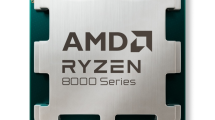













Kommentieren